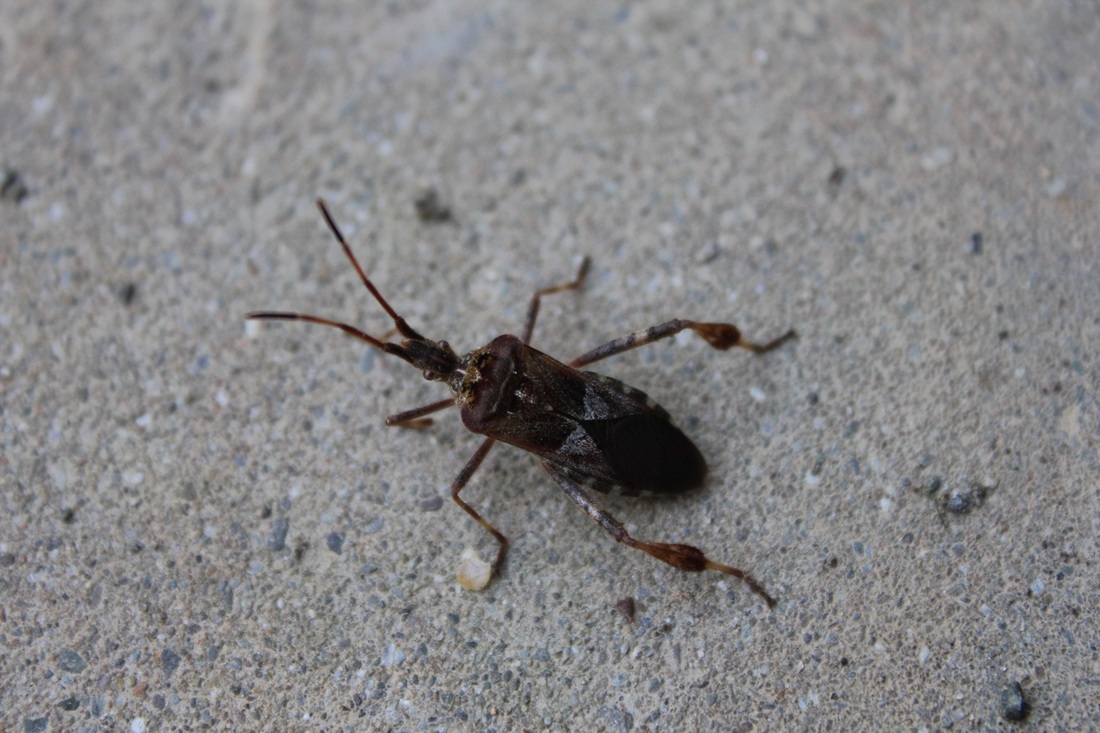2 October 2013
Western Conifer Seed Bug
Leptoglossus occidentalis
Orrington, Maine
Back in the fall of 2013, there were a number of these bugs near the windows of the guest bedroom in the upper floor of my house. Good-sized bugs - about 5/8 to 3/4 of an inch big (16 to 20 mm), they are native to western US states (California and Nevada) but have expanded their range. In the fall they look for human structures to overwinter in. The adults suck sap from the developing cones of conifer trees - around here they especially like Eastern White and Red Pine. They can't bite, so in that way are harmless to humans, but beware of their defense mechanism - a spray that has a very offensive smell.
Photo by Donne Sinderson
Western Conifer Seed Bug
Leptoglossus occidentalis
Orrington, Maine
Back in the fall of 2013, there were a number of these bugs near the windows of the guest bedroom in the upper floor of my house. Good-sized bugs - about 5/8 to 3/4 of an inch big (16 to 20 mm), they are native to western US states (California and Nevada) but have expanded their range. In the fall they look for human structures to overwinter in. The adults suck sap from the developing cones of conifer trees - around here they especially like Eastern White and Red Pine. They can't bite, so in that way are harmless to humans, but beware of their defense mechanism - a spray that has a very offensive smell.
Photo by Donne Sinderson


